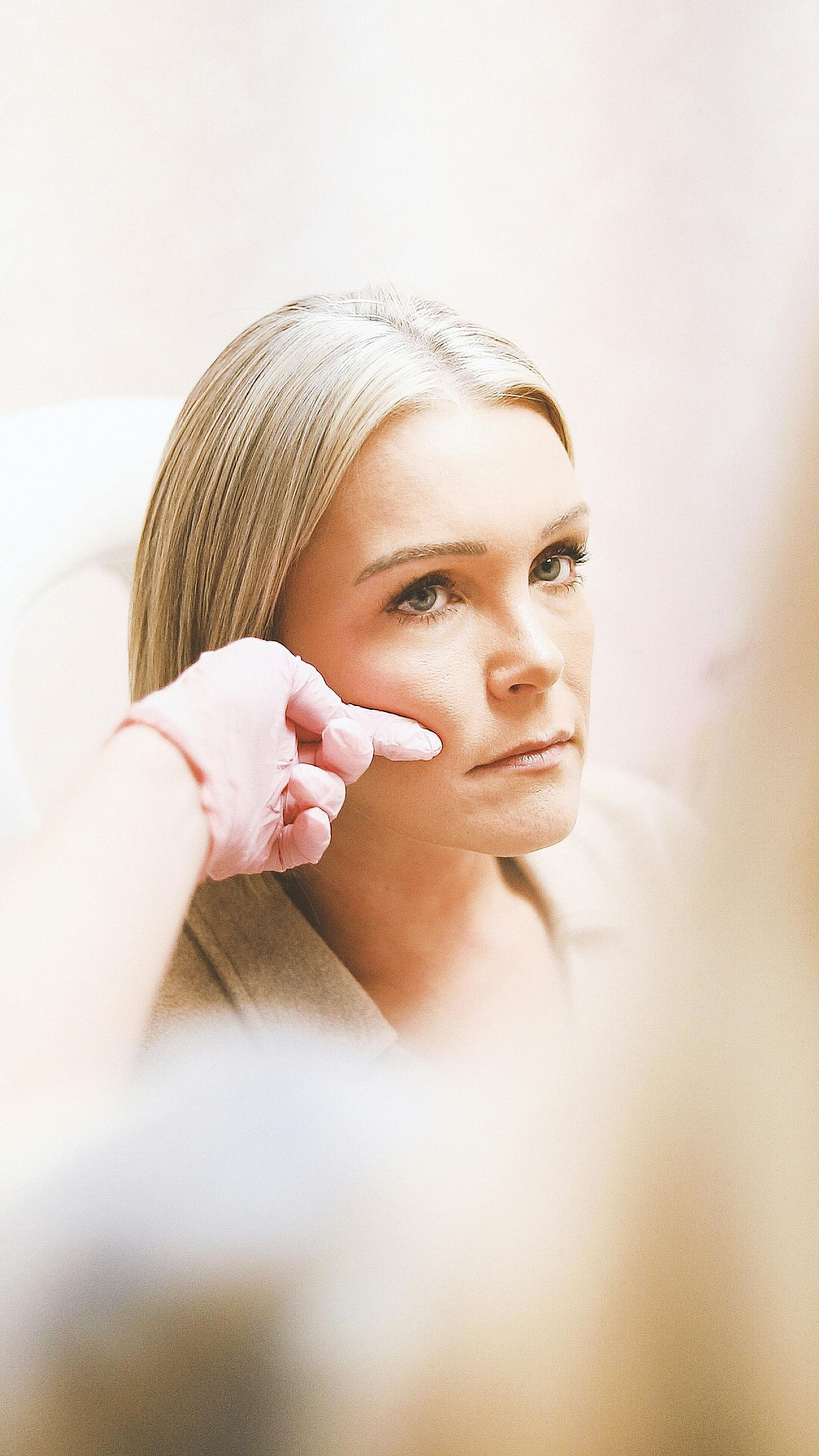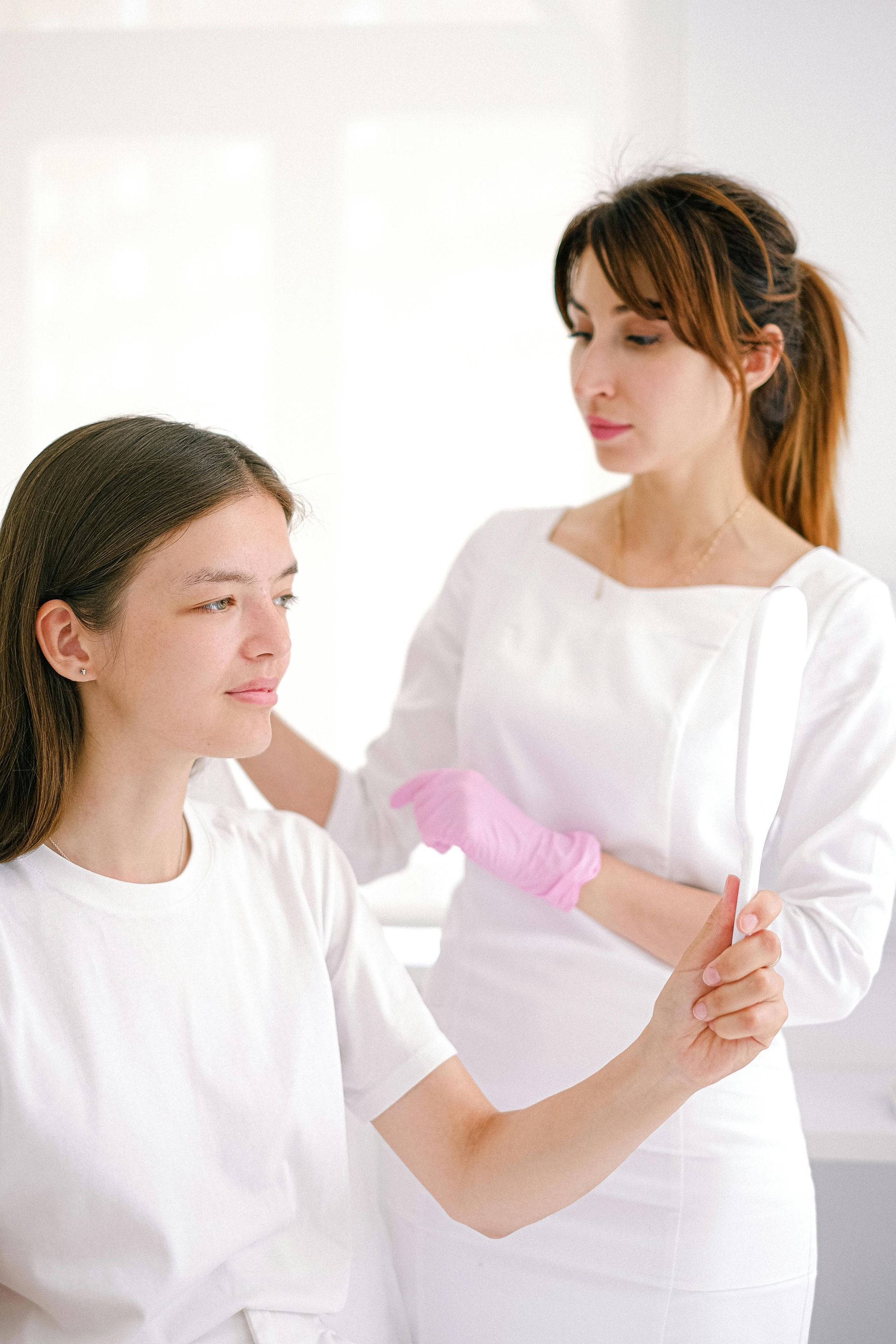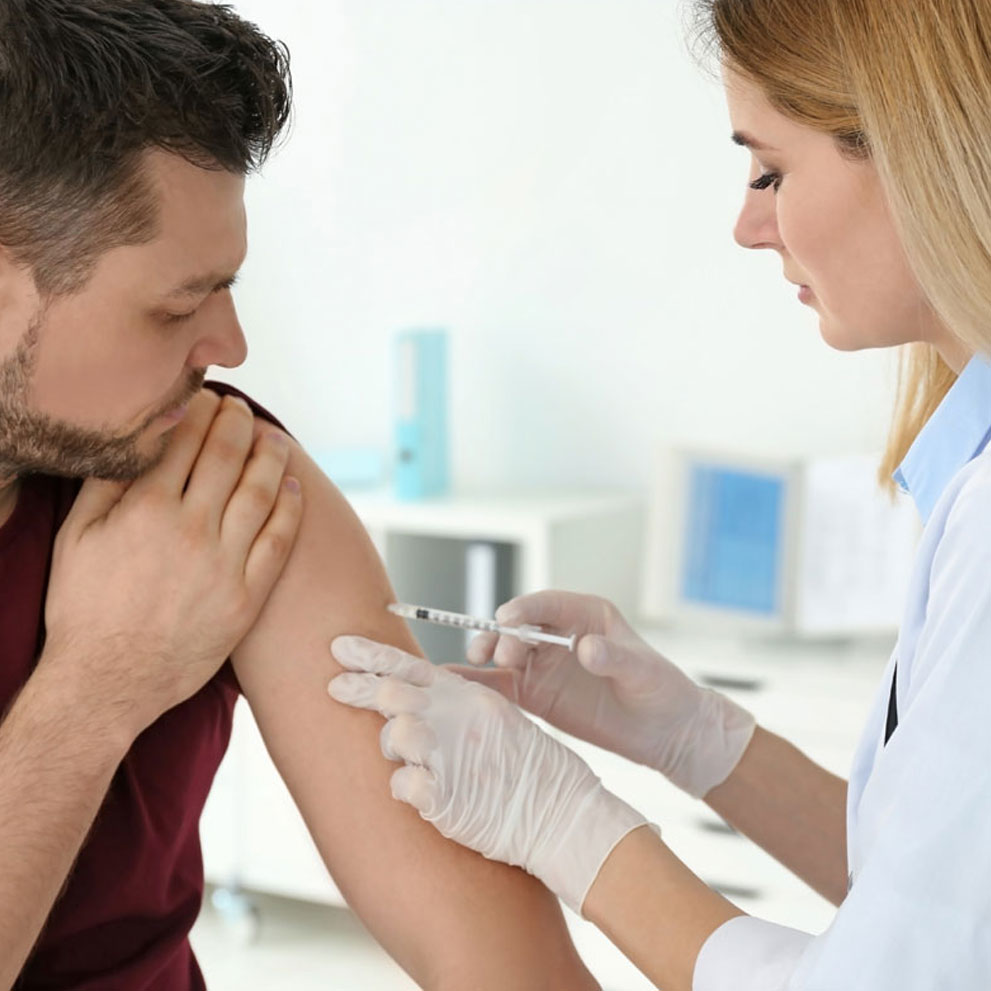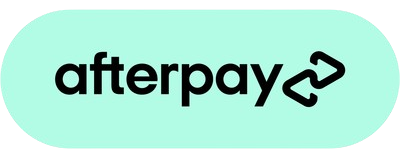Safety First: How 1 Health Meets New Zealand's Highest Aesthetic Medicine Standards
When you're considering aesthetic treatments, your safety should never be negotiable. But here's the uncomfortable truth: not all clinics offering cosmetic injections in Christchurch meet the same safety standards—or even legal requirements.
Some operate in grey areas. Others claim to prioritize safety but lack the infrastructure, training, or oversight to back it up. And a few provide genuine medical-standard care.
At 1 Health, we believe patients deserve absolute clarity about what "safety first" actually means. This blog explains exactly what the highest standards are, how New Zealand regulates aesthetic medicine, and precisely how 1 Health ensures your safety at every step.
The Regulatory Landscape: What Actually Governs Aesthetic Medicine in NZ?
Unlike cosmetic surgery (which is heavily regulated), aesthetic injectables exist in a unique regulatory space. Understanding this landscape is critical to understanding why clinic standards vary so dramatically.
The Key Regulatory Bodies
1. Medical Council of New Zealand (MCNZ)
- Registers and regulates all doctors in NZ
- Sets standards for "scope of practice" (what doctors can do)
- Requires doctors who administer cosmetic injections to be "vocationally registered" (specialist training in their field)
- For aesthetic medicine specifically, requires doctors to have:
- Specific training in cosmetic medicine techniques
- Understanding of facial anatomy and vascular anatomy
- Knowledge of complications and management
- Continuing professional development
2. Nursing Council of New Zealand
- Registers and regulates all nurses in NZ
- Sets competency standards for nursing practice
- For nurses administering injectables, requires:
- Registered Nurse status (3-year nursing degree minimum)
- Specific training in injection techniques
- Operating under "standing orders" from a medical doctor
- Regular competency assessment
3. Medsafe (NZ Medicines and Medical Devices Safety Authority)
- Approves all medications and medical devices for use in NZ
- Maintains database of approved products
- Issues warnings if safety issues arise
- Regulates product advertising and labeling
4. Health & Disability Commissioner (HDC)
- Independent body investigating complaints about healthcare services
- Upholds patient rights
- Enforces accountability when things go wrong
- Can award compensation for negligence
5. Ministry of Health New Zealand
- Issues national guidelines for safe practice
- Provides "Standing Order Guidelines" (2016) for nurse-administered treatment
- Sets infection control standards (AS/NZS 4815:2006)
The Standing Orders Framework: Why It Matters
Here's a critical point many patients don't understand: In New Zealand, registered nurses CANNOT legally administer prescription medicines (like Botox) without standing orders from a medical doctor.
Standing orders are:
- Written legal documents issued by a doctor
- Specifying which nurse can give which treatment
- Defining dosing, patient assessment protocols, and safety procedures
- Requiring monthly clinical note review/sign-off by the doctor
- Subject to annual competency review
- Audited by professional bodies
Why this matters for you:
- If a nurse is injecting Botox without standing orders, it's illegal
- A proper standing order framework means a doctor is actively supervising your care
- Monthly note review means your treatment is being clinically assessed
- Annual competency review ensures the nurse's skills are current
What we found when researching Christchurch clinics:
- Some clinics employ nurses with no medical oversight (illegal)
- Some have standing orders from doctors not trained in cosmetic medicine (inadequate)
- Some have standing orders but no monthly review (non-compliant)
- 1 Health has standing orders from NZSCM-accredited doctors with full monthly review
1 Health's Safety Infrastructure: What We Actually Do
At 1 Health, "safety first" isn't a marketing slogan—it's embedded in every process, every day.
Layer 1: Medical Oversight (Dual System)
Standing Orders through LA Aire Cosmetic Consultancy:
- Jordan Zheng operates under standing orders issued by NZSCM-accredited doctors
- LA Aire is New Zealand's only training programme designed by NZSCM doctors
- Standing orders specify:
- Approved treatments (Botox, Dysport, Xeomin, microfillers, etc.)
- Dosing guidelines and limits
- Patient assessment requirements
- Contraindication protocols
- Complication recognition and management
- Emergency escalation procedures
LA Aire's ongoing support includes:
- 24/7 phone access to supervising doctors (not just business hours)
- Monthly review of clinical notes for every patient
- Annual competency assessments
- Quarterly clinical audits of our practice
- Access to advanced training and professional development
- Quality assurance protocols beyond legal minimum requirements
On-Site Medical Oversight by Dr. Bernard Teo:
- Medical Director at 1 Health
- MBChB (Bachelor of Medicine and Surgery)
- FRNZCGP (Fellow of Royal NZ College of General Practitioners)
- Diploma in Dermatology
- Diploma in Skin Cancer Surgery
- Diploma in Occupational Medicine (Distinction)
- Actively involved in aesthetic treatment planning and complication management
Why dual oversight is superior:
- LA Aire's specialty is cosmetic medicine oversight
- Dr. Teo's dermatology and skin cancer surgery expertise adds additional safety layer
- Immediate on-site consultation available
- Better handling of complex cases and complications
Layer 2: Practitioner Qualifications & Experience
Jordan Zheng, Registered Nurse:
- Nursing Council of New Zealand registered
- Established reputation in Christchurch aesthetic community
- Years of hands-on injection experience
- Recent advanced Sunekos training (Italian skin booster technology)
- Ongoing professional development with LA Aire
- Monthly competency review and annual formal assessment
- Regular attendance at industry workshops and training
What matters:
- Jordan isn't learning on your face—she has established expertise
- She's undergone formal training, not just "learning on the job"
- Her skills are regularly assessed by supervising doctors
- She's committed to continuing education
Layer 3: Physical Infrastructure & Equipment
Treatment Environment:
- Registered medical facility (not a salon or spa)
- Compliant with AS/NZS 4815:2006 (Australian/NZ healthcare facility standards)
- Clean, clinical treatment room with proper sterilization equipment
- Medical-grade waste disposal (sharps, medical waste)
- Infection control protocols exceeding salon standards
Emergency Equipment & Medications:
- Adrenaline/epinephrine (for severe allergic reactions)
- Antihistamines (for allergic responses)
- Corticosteroids (for inflammation/swelling)
- Hyaluronidase (to reverse hyaluronic acid filler complications)
- Oxygen and resuscitation equipment
- Blood pressure monitoring capability
- Emergency protocols and staff training
Product Storage & Handling:
- Pharmacy-grade refrigeration with temperature monitoring and documentation
- Proper cold-chain maintenance (Botox, fillers lose efficacy if not stored correctly)
- Batch tracking and traceability for every product
- Organized, documented inventory system
- Emergency protocols if cold chain is interrupted
Sterilization & Infection Control:
- Medical-grade autoclave for reusable equipment
- Single-use sterile needles and injection materials
- Proper sharps disposal in approved containers
- Hand hygiene protocols (handwashing, sterile gloves)
- Environmental disinfection between patients
- Documentation of all sterilization procedures
Layer 4: Product Quality & Sourcing
Legitimate Pharmaceutical Supply Chain:
- All products sourced through authorized NZ pharmaceutical distributors
- Never grey-market, imported from unknown sources, or online retailers
- Batch numbers tracked and documented for every product
- Each batch verified against supplier documentation
Product Approval Standards:
- Medsafe approved (NZ Medicines and Medical Devices Safety Authority)
- TGA approved (Therapeutic Goods Administration - Australia)
- FDA approved where applicable (United States Food and Drug Administration)
- European regulatory approval where applicable
- No unapproved, experimental, or counterfeit products used
Products we use:
- Anti-wrinkle: Botox® (Allergan), Dysport® (Ipsen), Xeomin® (Merz)
- Microfillers: Rejuran® (South Korea), Juvelook® (South Korea), Sunekos® (Italy), NCTF 135HA (France), Teosyal Redensity (Switzerland)
- Dermal fillers: Premium brands from reputable manufacturers
- All independently audited and approved
What this prevents:
- Counterfeit products (a real problem in cosmetics industry)
- Expired or degraded products
- Products stored improperly (affecting efficacy and safety)
- Unknown or untraceable products
- Products approved in other countries but not safe for use here
Layer 5: Patient Assessment & Screening
Pre-treatment Medical Review:
- Complete medical history questionnaire
- Current medications and supplements review
- Allergies and previous adverse reactions
- Contraindications screening (pregnancy, autoimmune conditions, bleeding disorders, etc.)
- Health conditions affecting suitability (uncontrolled diabetes, active infections, etc.)
- Psychological assessment (ruling out body dysmorphic disorder or unrealistic expectations)
Dermatological Assessment (when indicated):
- Dr. Teo's skin examination
- Assessment for underlying skin conditions (rosacea, eczema, sun damage)
- Skin cancer screening
- Identification of contraindications specific to skin status
- Recommendations for concurrent skin health management
Medication Interaction Screening:
- Blood thinners (warfarin, aspirin, NSAIDs) - increase bruising risk
- Immunosuppressants - may affect healing
- Certain antibiotics - photosensitivity concerns
- Herbal supplements (ginkgo, garlic, fish oil) - bleeding risk
- Coordination with other specialists (cardiologist, rheumatologist) if needed
Realistic Goal-Setting:
- Honest assessment of what's achievable for your specific face/anatomy
- Discussion of limitations (can't change bone structure, extreme transformations aren't appropriate)
- Alternatives if treatment might not achieve goals
- Realistic timeline for results
- Long-term maintenance commitment discussion
- Permission to decline treatment if patient isn't suitable
Layer 6: Comprehensive Written Consent
Every patient receives and signs:
- Treatment Consent Form specifying:
- Exact treatment being performed
- Products being used (brand name, batch number)
- Risks and potential complications
- Expected timeline for results
- Realistic outcome expectations
- Alternative options (including choosing not to treat)
- Risk Disclosure including:
- Common side effects (swelling, bruising, redness)
- Rare but serious complications (vascular occlusion, infection, nerve injury)
- What to do if complications occur
- When to contact clinic vs. emergency services
- Aftercare Instructions specifying:
- What to do/avoid for optimal results
- When complications might appear (timeline)
- Contact information for concerns
- Follow-up appointment scheduling
- Medical Records Documentation:
- All treatment details recorded in your 1 Health medical file
- Accessible to Dr. Teo and relevant healthcare providers
- Integration with your existing medical history
- Creates continuity of care
Layer 7: Complication Management Protocols
Rare but serious complications can occur. Our protocols ensure rapid, appropriate response:
Vascular Occlusion (filler accidentally blocks a blood vessel):
- Immediate recognition: Jordan trained to identify signs (blanching, pain, skin color change)
- Immediate action: Stop injection, inform patient, call Dr. Teo
- Immediate treatment: Hyaluronidase administered (reversal agent) if applicable
- Medical management: Dr. Teo assesses, provides immediate medical care
- Hospital coordination: Direct referral to Christchurch Hospital if advanced intervention needed
- Follow-up: Daily monitoring, documentation, HDC notification if serious
Allergic Reaction (rare with modern products):
- Recognition: Itching, hives, difficulty breathing, throat tightness
- Immediate action: Stop treatment, lie patient down, call Dr. Teo
- Emergency medications: Adrenaline, antihistamines, corticosteroids available immediately
- Medical management: Dr. Teo provides emergency care or paramedic coordination
- Hospital transfer: 111 call if severe
- Follow-up: Investigation of trigger, future precautions documented
Infection (rare with sterile technique, but possible):
- Recognition: Redness, warmth, swelling beyond 48 hours, pus, fever
- Patient contact: Encourage prompt contact if signs develop
- Assessment: Dr. Teo or GP evaluates
- Treatment: Antibiotics if bacterial infection confirmed
- Follow-up: Wound care, monitoring, documentation
Nerve Injury (very rare with proper technique):
- Recognition: Weakness, numbness, difficulty moving facial muscles
- Assessment: Dr. Teo evaluates immediately
- Documentation: Detailed assessment and photography
- Specialist referral: Possible neurology referral if serious
- Follow-up: Regular monitoring, likely recovery within weeks to months
- Medical management: Supportive care, eye protection if needed
Layer 8: Accountability & Transparency
Professional Registration:
- Jordan Zheng: Registered with Nursing Council of New Zealand
- Dr. Teo: Registered with Medical Council of New Zealand
- LA Aire doctors: Medical Council registered, NZSCM-accredited
- All registration details publicly verifiable
Professional Indemnity Insurance:
- Comprehensive coverage for patient injury
- Covers negligence and complications
- Provides pathway for compensation if things go wrong
- Required for legal practice
Continuing Professional Development:
- Jordan: Regular training, advanced workshops, skill updates
- Dr. Teo: Medical Council-required continuing education
- LA Aire: Ongoing professional development and competency assessment
- All documented and auditable
Audit & Quality Assurance:
- LA Aire quarterly clinical audits
- Monthly note review by supervising doctors
- Annual competency assessment for Jordan
- Patient satisfaction surveys
- Complication tracking and analysis
Complaints & Accountability:
- Internal complaint process available
- External accountability through Health & Disability Commissioner
- Professional body oversight (Nursing Council, Medical Council)
- Transparent communication with patients about concerns
Comparison: 1 Health vs. Other Provider Types
| Aspect | 1 Health (Medical Clinic) | Standalone Aesthetic Clinic | Spa/Salon | Non-Compliant Provider |
|---|---|---|---|---|
| Practitioner type | Nurse under medical supervision | Nurse or aesthetician | Beauty therapist | Unlicensed person |
| Medical oversight | YES - dual (LA Aire + Dr. Teo) | Sometimes - variable quality | Rarely | NO |
| Standing orders | YES - NZSCM-accredited doctors | Maybe - not always verified | NO | NO (illegal) |
| Monthly note review | YES - required | Varies | NO | NO |
| Emergency equipment | YES - full resuscitation | Possibly | NO | NO |
| On-site doctor | YES - Dr. Teo | NO | NO | NO |
| Infection control | Medical-grade (AS/NZS 4815) | Clinical standards | Beauty industry standards | Minimal |
| Product sourcing | Authorized distributors | Usually legitimate | May be grey-market | Often counterfeit |
| Regulatory compliance | Full compliance | Partial | Non-compliant | Non-compliant |
| Complication management | Immediate medical intervention | Phone consultation | Hospital referral | Confusion, delay |
| Accountability | Full (MCNZ, NCN, HDC, Insurance) | Partial | Limited | None |
| Patient safety | Highest standard | Variable | Low | High risk |
Real-World Scenario: When Complications Occur
Scenario: Vascular Occlusion (filler blocks blood vessel)
Vascular occlusion is rare but serious. If not treated promptly, it can lead to tissue death and permanent scarring or vision loss.
What happens at each provider type:
At 1 Health:
- Jordan recognizes symptoms: skin blanching, pain that feels wrong, color change
- Immediately stops injection and informs patient
- Calls Dr. Teo (on-site)
- Dr. Teo arrives within minutes, examines patient
- Hyaluronidase administered immediately (reverses hyaluronic acid fillers)
- Monitoring and pain management provided
- If advanced intervention needed, direct coordination with Christchurch Hospital
- Follow-up: Daily monitoring, documentation for medical records, patient education
- Outcome: Best chance of full recovery with minimal permanent damage
At typical standalone aesthetic clinic:
- Nurse may or may not recognize complication
- Phone call to supervising doctor (who may not be immediately available)
- Doctor may recommend "wait and see" without immediate intervention
- Patient sent home or to emergency department
- Hours delay in receiving hyaluronidase (if available elsewhere)
- Emergency department may not have hyaluronidase immediately
- Outcome: Risk of permanent scarring, vision loss, or disfigurement
At spa/salon:
- Beauty therapist may not recognize complication
- No emergency equipment available
- No ability to provide medical treatment
- Confusion about what to do
- Hours delay while patient finds medical care
- Possible permanent damage before appropriate treatment
- Outcome: High risk of serious, permanent injury
This scenario illustrates why medical oversight matters: It's the difference between preventing disaster and dealing with permanent consequences.
Standards Documentation & Verification
You Can Verify Our Compliance
Ask us to show you:
- Standing orders from LA Aire (we're happy to explain them)
- Product sourcing documentation and batch numbers
- Infection control protocols and sterilization logs
- Staff qualifications and registrations
- Insurance and professional indemnity coverage
- Complaint procedures and HDC information
You can independently verify:
- Jordan Zheng's Nursing Council registration at: [Nursing Council website]
- Dr. Teo's Medical Council registration at: [MCNZ website]
- LA Aire's standing order authority and NZSCM accreditation
- Product approval at Medsafe website
- Health & Disability Commissioner contact information
Red flags to avoid:
- Clinic won't show you their standing orders or oversight documentation
- Products sourced from unclear sources
- No emergency equipment visible or mentioned
- Staff without clear qualifications
- No written consent or complication discussion
- Pressure to proceed without full assessment
- Unwillingness to discuss safety protocols
Our Commitment: Safety Above All
At 1 Health, we could offer cheaper treatments by cutting corners. We could:
- Skip the monthly note reviews (save money on doctor oversight)
- Use grey-market products (cheaper than legitimate distribution)
- Reduce emergency equipment (minimize clinic costs)
- Hire less experienced staff (lower salary costs)
- Skip dermatological assessments (faster throughput)
We don't do any of these things.
Because safety isn't negotiable. Your wellbeing isn't a cost to minimize—it's a responsibility to maximize.
Your Rights as a Patient
In New Zealand, you have rights:
Right to information:
- Full transparency about treatment, risks, alternatives
- Clear explanation of qualifications and oversight
- Access to informed consent forms before treatment
Right to safety:
- Sterile, medical-standard environment
- Emergency preparedness
- Appropriate medical oversight
- Proper product sourcing and handling
Right to accountability:
- Professional regulation and oversight
- Complaints pathway (internal and external)
- Health & Disability Commissioner access
- Insurance coverage for complications
Right to privacy:
- Confidential medical records
- Secure information handling
- Privacy according to Health Information Privacy Principles
Right to decline:
- Refuse treatment without judgment
- Get second opinion
- Change provider
If something goes wrong:
- Internal complaint pathway at clinic
- Health & Disability Commissioner investigation
- Professional body complaints (Nursing Council, Medical Council)
- Potential legal action for negligence
- Insurance compensation if applicable
Booking Your Safety-Conscious Consultation
When you book aesthetic treatment at 1 Health, you're not just booking an injection—you're booking:
- Comprehensive medical assessment
- Expert practitioner (Jordan Zheng)
- Dual medical oversight
- Full emergency preparedness
- Medical clinic infrastructure
- Regulatory compliance
- Accountability and transparency
- Your safety as absolute priority
During consultation, we welcome:
- Any questions about our safety protocols
- Request to see documentation
- Discussion of your medical history and concerns
- Time to ask questions (no rushing)
- Permission to ask for everything to be explained clearly
We're confident in our standards because they're real, not just claimed.
Contact 1 Health
📞
Phone: 03 662 9309
✉️
Email:
reception@1health.nz
🌐
Website:
www.1health.nz
📍
Address: 1 Henry Wigram Drive, Wigram, Christchurch 8042
Opening Hours:
- Monday - Friday: 8:30am - 6:00pm
- Saturday: 9:00am - 2:00pm
- Sunday: 9:00am - 12:00pm
Disclaimer
This article is for informational purposes only. All aesthetic treatments carry risks and may not be suitable for everyone. Individual safety assessment will be conducted during professional consultation. Before undergoing any aesthetic treatment, consult with a qualified healthcare practitioner who can assess your individual circumstances. Contact 1 Health to arrange a professional consultation with Jordan Zheng.
1 Health Medical Centre operates in full compliance with Medical Council of New Zealand, Nursing Council of New Zealand, Medsafe, Ministry of Health guidelines, and Health & Disability Commissioner standards.
Written by the team at 1 Health Medical Centre, Christchurch
Medical Director: Dr. Bernard Teo (MBChB, FRNZCGP, Dip Derm, Dip Skin Cancer Surgery, Dip Occ Med)
Aesthetic Nurse: Jordan Zheng, RN
Last updated: November 2025



